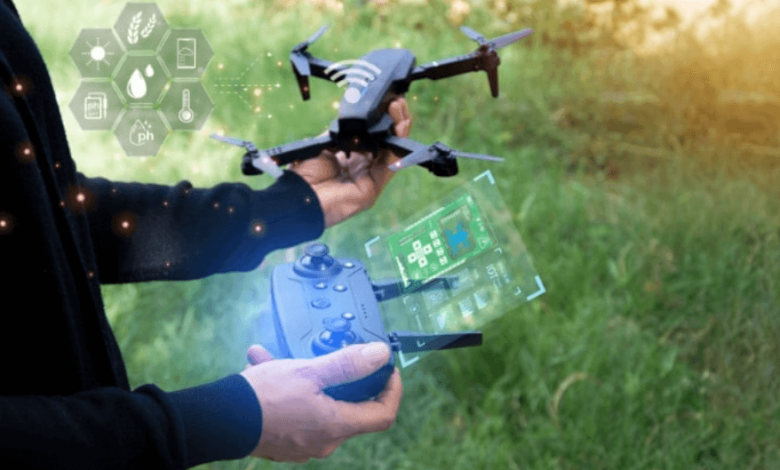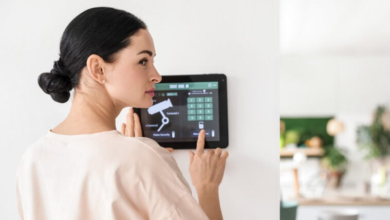Cybersecurity Risks in Smart Firearms and Autonomous Drones: Protecting Against Digital Threats

As firearms technology and drone capabilities develop, so does the digital ecosystem that supports them. The integration of wireless connectivity, GPS tracking, biometric authentication and onboard artificial intelligence has ushered in new levels of precision, automation and operational efficiency. Yet, this wave of innovation brings with it a critical risk: cybersecurity vulnerabilities. The Sonoran Desert Institute (SDI), accredited by the Distance Education Accrediting Commission (DEAC), equips students with a strong foundation in traditional gunsmithing. It also prepares them to address emerging digital threats tied to smart weapon systems, where securing connected firearms and autonomous drones is increasingly vital.
Digital threats, such as hacking, data breaches and remote manipulation of weaponized or surveillance-enabled systems, present not only technical challenges but also profound ethical and safety implications. Whether deployed in military, law enforcement or civilian contexts, these technologies must be protected from unauthorized access to ensure operational integrity and public safety.
The Vulnerabilities of Smart Firearms
Smart firearms are designed to enhance security and accountability. Features may include fingerprint recognition, Bluetooth pairing with authorized devices and digital firing controls. While these advancements are valuable in preventing unauthorized use, they also introduce potential entry points for cyberattacks.
While smart firearms, such as those incorporating biometric sensors and wireless connectivity, offer enhanced security features, they also introduce potential cybersecurity vulnerabilities. For instance, the Armatix iP1 smart gun was reportedly susceptible to being fired by unauthorized users using magnets to bypass its safety mechanisms. However, the feasibility of remotely controlling such weapons remains largely theoretical and would require significant technical capabilities and access. For example, if a smart firearm is paired with a smartphone or wearable device via Bluetooth, a hacker might exploit weak encryption or software vulnerabilities to gain unauthorized access.
Smart firearms may log data such as usage patterns and authentication records. If not adequately secured, this information could be vulnerable to unauthorized access, potentially impacting user privacy and the integrity of forensic investigations. Implementing robust encryption and secure data storage practices is essential to mitigate these risks. This type of breach may have implications for legal investigations, insurance disputes or privacy violations.
Manufacturers are beginning to address these vulnerabilities by incorporating advanced encryption protocols, secure firmware updates and tamper-resistant chips. However, the arms race between developers and cybercriminals continues, and proactive cybersecurity measures are more vital than ever.
See also: What Is a Battery Energy Storage System?
Autonomous Drones and the Risks of Remote Compromise
Autonomous drones are increasingly used in military reconnaissance, search-and-rescue operations and even commercial delivery systems. With AI navigation, live video transmission and real-time GPS tracking, these machines operate largely independent of human control, yet rely heavily on digital networks and communication protocols.
If intercepted or hijacked by malicious actors, drones can become tools for surveillance, disruption or destruction. Autonomous drones are indeed susceptible to cybersecurity threats such as GPS spoofing and signal jamming. For example, in 2011, Iran reportedly captured a U.S. RQ-170 drone by exploiting GPS vulnerabilities. Ensuring secure communication protocols and incorporating anti-spoofing technologies are critical measures to protect against such attacks.
These risks are heightened in combat zones or high-security areas, where a compromised drone could reveal troop positions, sabotage operations or deliver explosive payloads. Even in civilian contexts, an insecure drone can be exploited for spying, data theft or property damage.
To combat these threats, developers are implementing multi-layered security measures:
- End-to-end encryption for all data transmissions
- Self-destruct protocols to erase memory or turn off hardware when compromised
- Autonomous threat detection systems that can recognize suspicious inputs and shut down operations preemptively
In addition, drone manufacturers are working closely with cybersecurity experts to conduct penetration testing and patch vulnerabilities before commercial release.
The Importance of Secure Data Transmission
Data is the currency of modern weapon systems and surveillance tools. Whether tracking a drone’s flight path or logging smart firearm usage, data must be securely transmitted and stored. Unfortunately, many high-tech devices rely on cloud servers, mobile apps or unsecured Wi-Fi connections that leave them open to interception.
The threat isn’t just data theft; it’s the ability to manipulate it. Altered log files can mislead investigators, and spoofed transmissions can make it appear as though a device was used improperly or in the wrong location. In high-stakes environments, misinformation can have fatal consequences.
Systems are being designed with blockchain-based logging, Zero-Trust Network Access (ZTNA) and multi-factor authentication to secure data. These protocols ensure that only verified users and devices can access or alter sensitive information and that any changes are traceable.
Compliance with cybersecurity frameworks like those provided by the National Institute of Standards and Technology (NIST) is increasingly encouraged within the industry. However, adoption varies, and there is a growing need for standardized regulations specifically addressing the cybersecurity of smart firearms and autonomous drones.
Balancing Usability with Security
There’s an inherent tension between functionality and security. The more features a smart firearm or drone has, such as voice commands, geofencing and app connectivity, the more potential entry points hackers have. Yet removing those features may limit usability or the technology’s appeal to consumers and agencies.
It has led to a growing focus on user-centered cybersecurity design, where devices remain intuitive but secure. For example, smart guns with biometric locks may feature fallback authentication options that still meet encryption standards, while drones might use AI to detect anomalous behavior and revert to manual override.
Education also plays a key role. Operators, whether law enforcement officers or hobbyist drone pilots, must understand basic cybersecurity hygiene, such as changing default passwords, installing firmware updates and avoiding public networks.
The Role of Governments and Policy
As the threat landscape changes, regulatory agencies are beginning to address the cybersecurity challenges of smart weapons and autonomous drones. Governments are issuing security guidelines for defense contractors, drone manufacturers and software developers.
The U.S. Department of Homeland Security, for example, has launched initiatives to assess and mitigate vulnerabilities in connected weapon systems. Meanwhile, international coalitions are drafting standards for ethical drone usage and data privacy in high-risk environments.
Regulation helps ensure a baseline level of protection but must be agile enough to adapt to the rapidly changing nature of cyber threats. Public-private partnerships will be essential to creating effective, enforceable standards, without stifling innovation.
The age of smart firearms and autonomous drones brings powerful possibilities and equally potent risks. As more devices connect to digital networks, cybersecurity becomes as essential as mechanical reliability or ergonomic design.
Sonoran Desert Institute equips future gunsmiths with the knowledge and tools to navigate the cybersecurity challenges of today’s connected weapon systems. By embedding modern security awareness into its curriculum, it ensures that graduates are prepared to understand both the promise and the potential peril of emerging technologies.
Protecting advanced weapons and surveillance tools from cyber threats is no longer just a technical responsibility. It’s a matter of public safety, operational reliability and institutional trust. As developers, operators and educators work in unison to strengthen these systems, the industry can continue to innovate, without compromising security. In doing so, we protect not only the technologies of tomorrow but also the people and missions they are meant to support.



